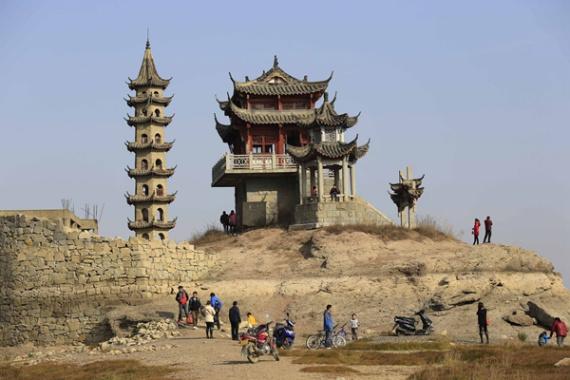
"White clothes have already become a part of history for Sanxianhu. I'm afraid that young people will also become history," said Zhou Can, the head of a local community.
Nationwide, 27.2 percent of river water and 67.8 percent of lake water is undrinkable, according to the Ministry of Water Resources.
In 2014, when the ministry monitored 2,071 wells from 17 provincial regions in the northern part of the country, it discovered that the quality of the subterranean water was below par, meeting national standards in just 15.2 percent of the areas tested. In 48.9 percent of the areas the water was classified as "low quality", while it was designated "poor quality" in 35.9 percent.
Structural damage
Northern Hebei province is faced with the country's biggest water crisis. It has one-seventh the national average of per capita water resources, with just 307 cubic meters.
"The province has 6 billion cubic meters of overexploited underground water out of the country's total 17 billion cubic meters," said Qi Bingqiang, an official with the Ministry of Water Resources.
In 2006, an 8-kilometer-long sinkhole suddenly appeared in Baixiang county, Hebei. Experts linked the sudden collapse to drought and falling levels of underground water.
"The gap grew wider and wider, with the widest spot about 1 meter. You could hardly see the bottom," said Zhai Jingli, a resident of nearby Zhailixi village.
Cracks not only appeared on the ground, but also in homes. More than 230 of the 420 houses in the village have cracked walls because the foundations have shifted. Cracks have formed on the ceilings, walls and floor throughout villager Lu Haisu's house.
"We rebuilt the house twice after it started to crack in 2006, but the cracks kept showing up again after the reconstruction," the 54-year-old said. "I can hear the wall cracking at night when I'm in bed."
Water shortages also plague nearby Beijing. The capital's average annual rainfall of 500 millimeters can only provide water for a population of 12 million people, but in 2011 the city's population had reached 20 million, according to the municipal water authorities.


















































